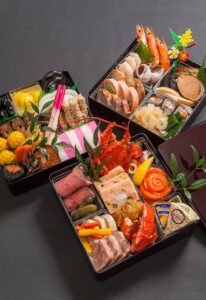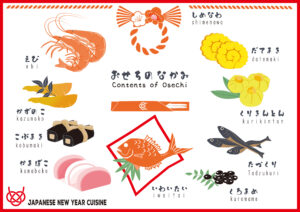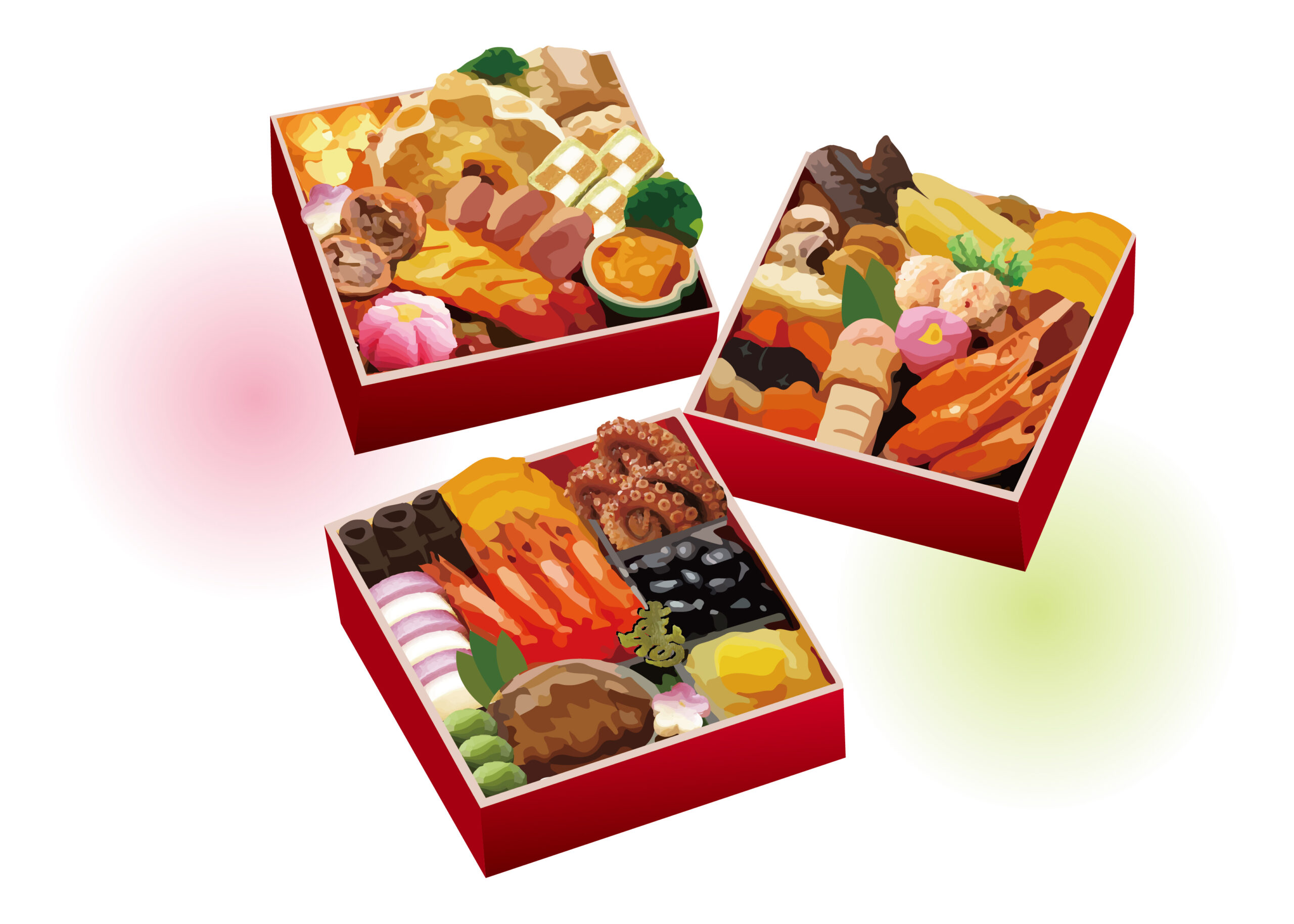Osechi ryori, a quintessential part of Japan’s New Year celebration, is far more than just a festive feast. Packed into elegant lacquered boxes, each dish resembles a tiny treasure, imbued with wishes and prayers for the year ahead. For first-timers, opening an osechi box is akin to discovering a treasure chest, filled with surprises and delight.

The history of osechi stretches back over a millennium to the Heian period’s court rituals known as sechie. These seasonal ceremonies involved offering food to the gods and enjoying a feast with family. Over time, this custom found its way to the homes of ordinary people and eventually became a New Year-specific tradition.
By the Edo period, osechi had taken the form we know today, served in tiered jubako boxes. Without refrigeration, dishes were crafted to last, making preservation a key feature. Families prepared osechi together on New Year’s Eve, allowing the kitchen—and especially the women—a well-deserved rest during the first three days of the year. It was both a culinary and a cultural act of care.
Kuromame (Sweet Black Beans):
A play on the word mame (meaning diligent), they symbolize health and hard work. Their sweetness adds a loving touch from the chef.
Kazunoko (Herring Roe):
With countless tiny eggs, this dish represents prosperity and the blessing of many descendants. The popping texture brings a fun start to the year!
Tazukuri (Candied Sardines):
These dried anchovies, once used as fertilizer, symbolize bountiful harvests. Crunchy and sweet, they’re a tribute to agricultural blessings.
Kurikinton (Sweet Chestnut Paste):
The golden hue of this dish signifies wealth and fortune—a dessert as rich in taste as it is in symbolism.
Red and White Kamaboko (Fish Cakes):
Their festive colors stand for joy, while their sunrise-inspired shape makes them perfect for ringing in the year.
Kombu Maki (Rolled Kelp):
A wordplay on yorokobu (to rejoice), these savory rolls are a celebration of happiness itself.
Datemaki (Sweet Rolled Omelet):
Resembling scrolls, they signify knowledge and cultural growth, while adding a touch of elegance to the box.

In traditional households, New Year’s Eve was a whirlwind of activity. Mothers and grandmothers deftly prepared simmered and fried dishes, while fathers and children pitched in with tasks big and small. The bustling kitchen transformed into a stage for family teamwork, all to welcome the new year together.
Nowadays, ready-made osechi from stores has become common, catering to modern lifestyles. Yet, families often still gather to fill their boxes together, creating a moment to strengthen bonds while preparing for the year ahead.
Osechi has evolved to meet contemporary tastes and needs. From Western and Chinese-inspired flavors to allergy-friendly options, there’s something for everyone. Luxury hotels and restaurants offer elaborate osechi, while convenient options from supermarkets ensure accessibility.
Trendy osechi, designed for aesthetic appeal and social media stardom, have joined the ranks, as have smaller, single-serving boxes. But no matter the style, the thrill of opening the osechi box—like unwrapping a New Year’s gift—remains timeless.
Osechi is more than a meal; it’s a cultural tapestry woven with wishes and traditions. Each dish invites conversation, warms hearts, and turns the New Year’s table into a place of connection and joy.
Far from being just a relic of the past, osechi continues to adapt while preserving its essence—a celebration of shared moments with loved ones. Perhaps the act of gathering around the osechi box, brimming with hope and happiness, is the real symbol of a bright and promising year ahead.




コメント